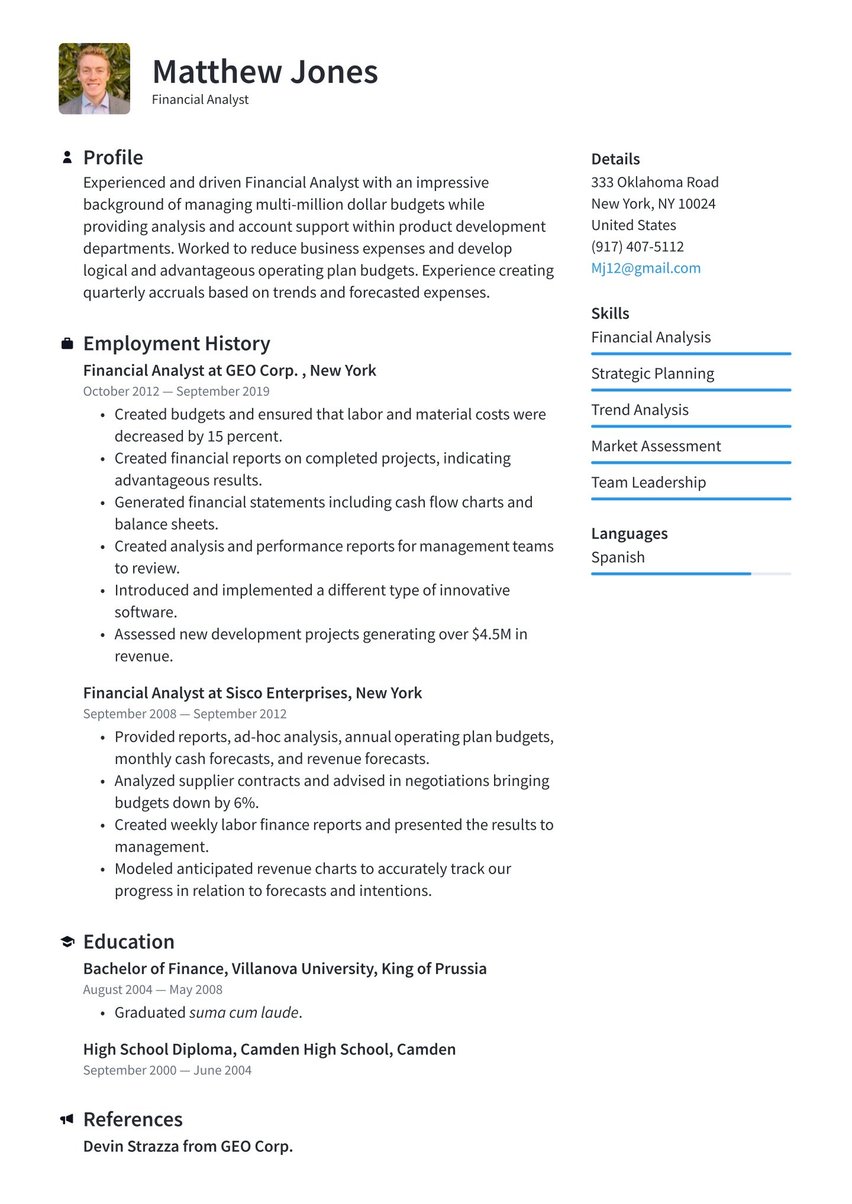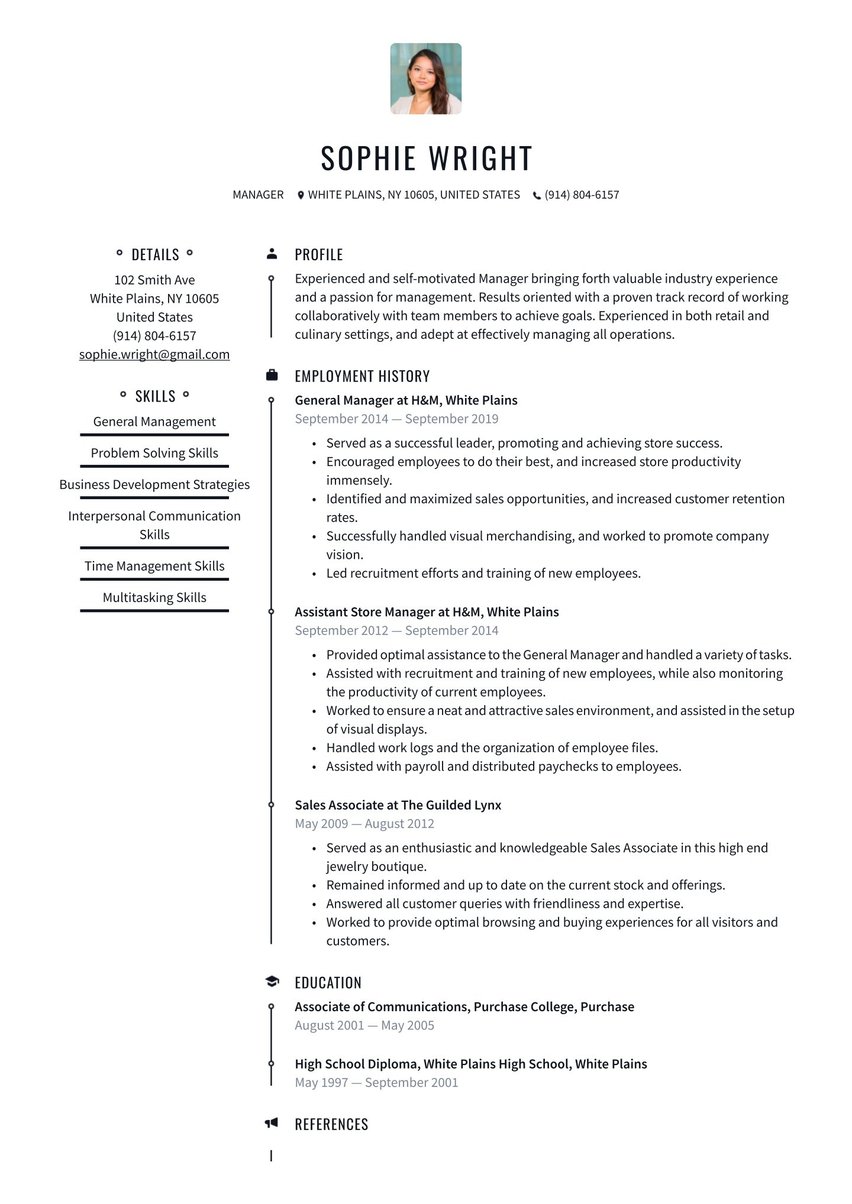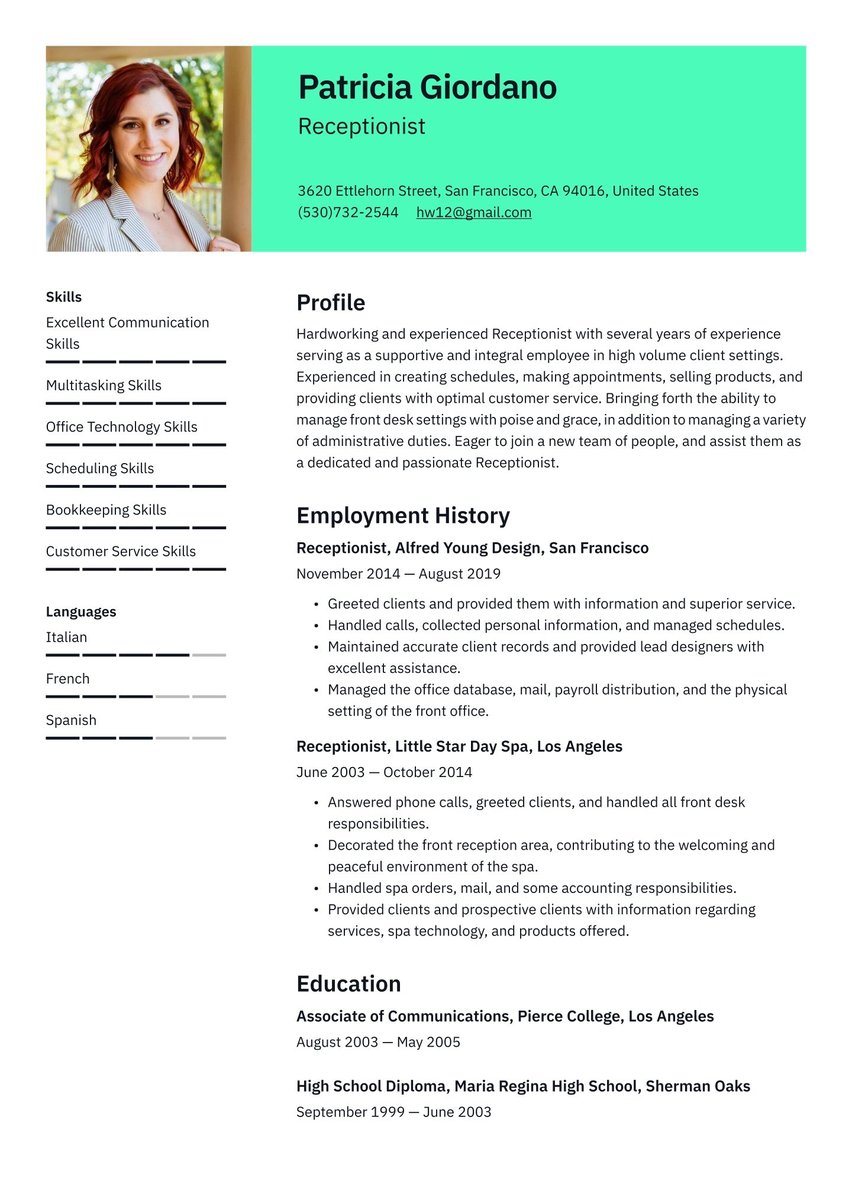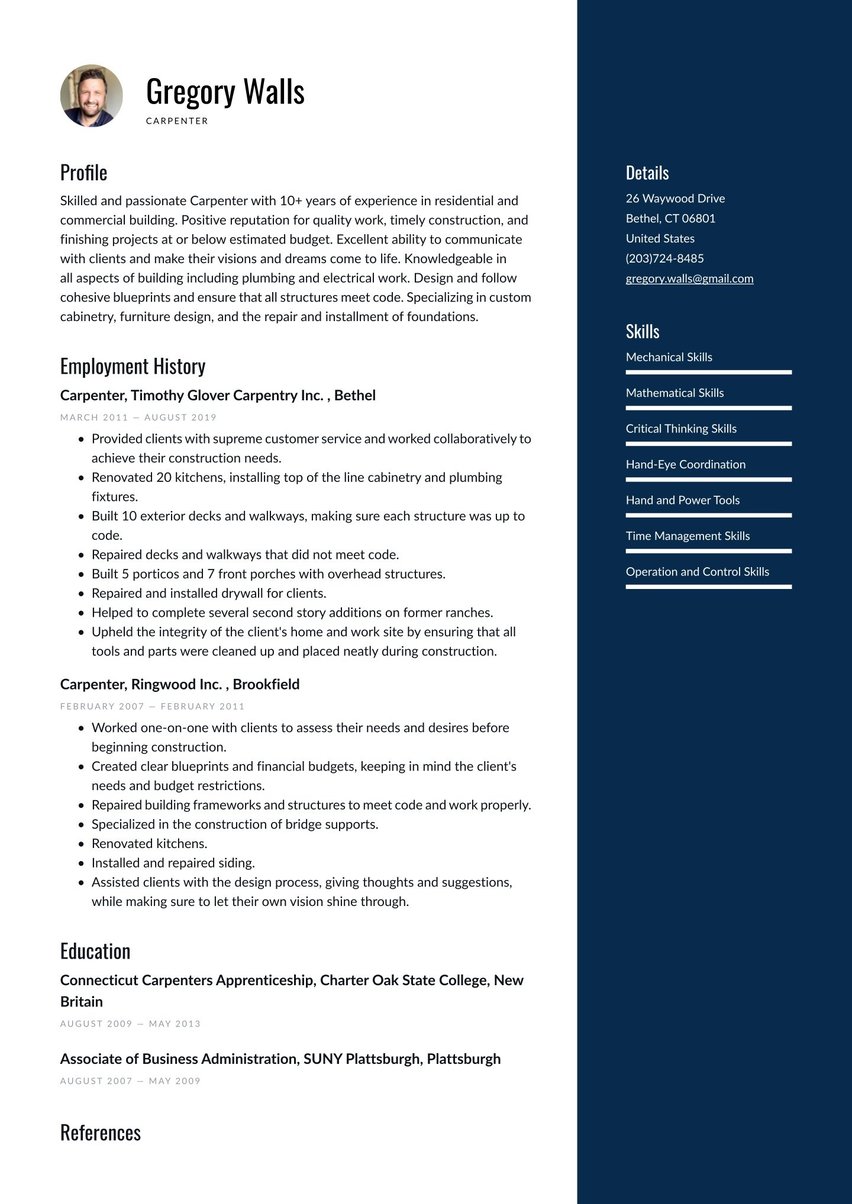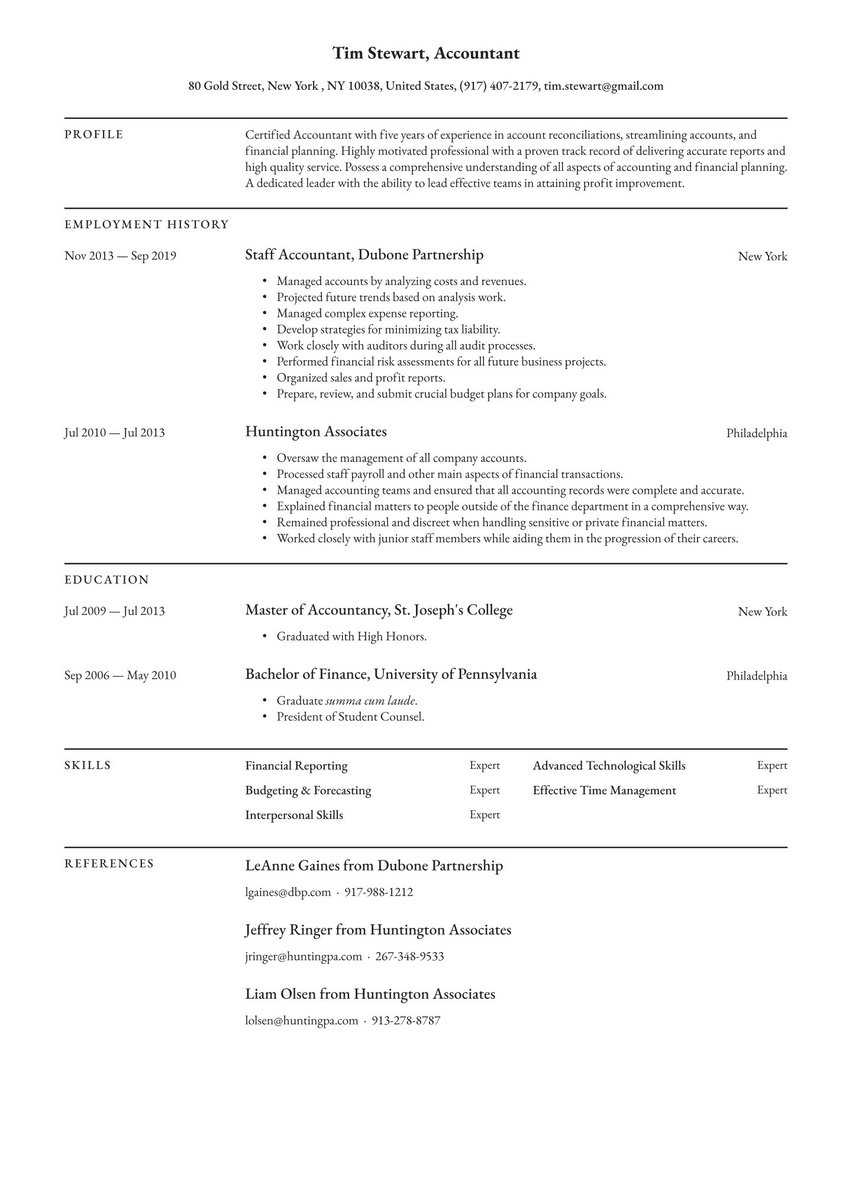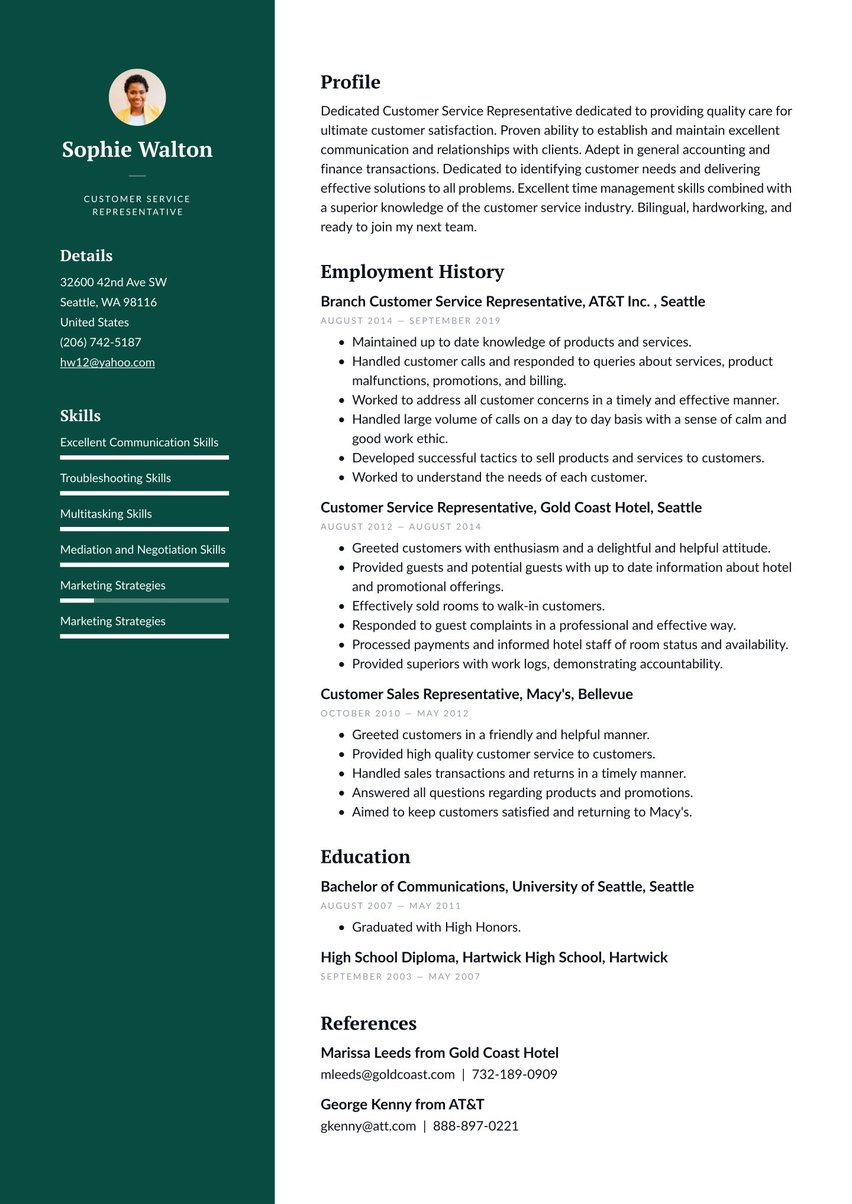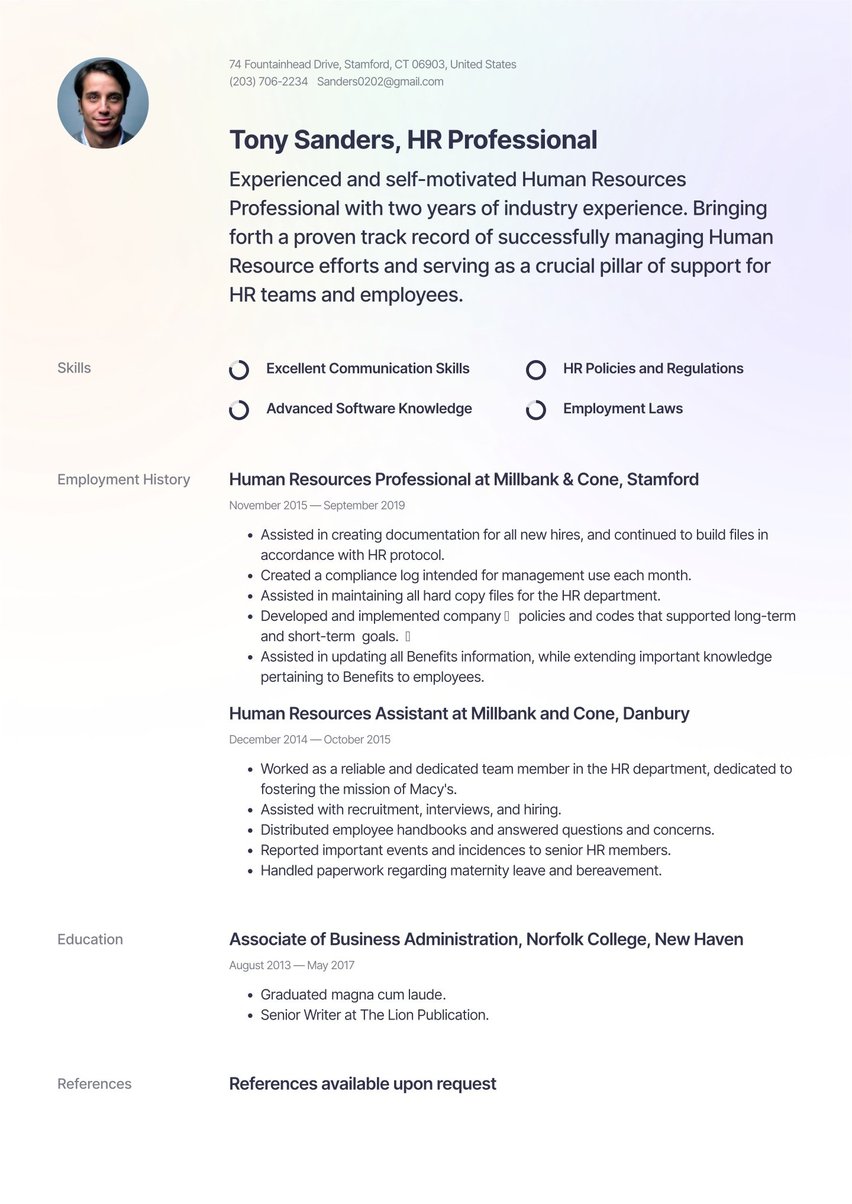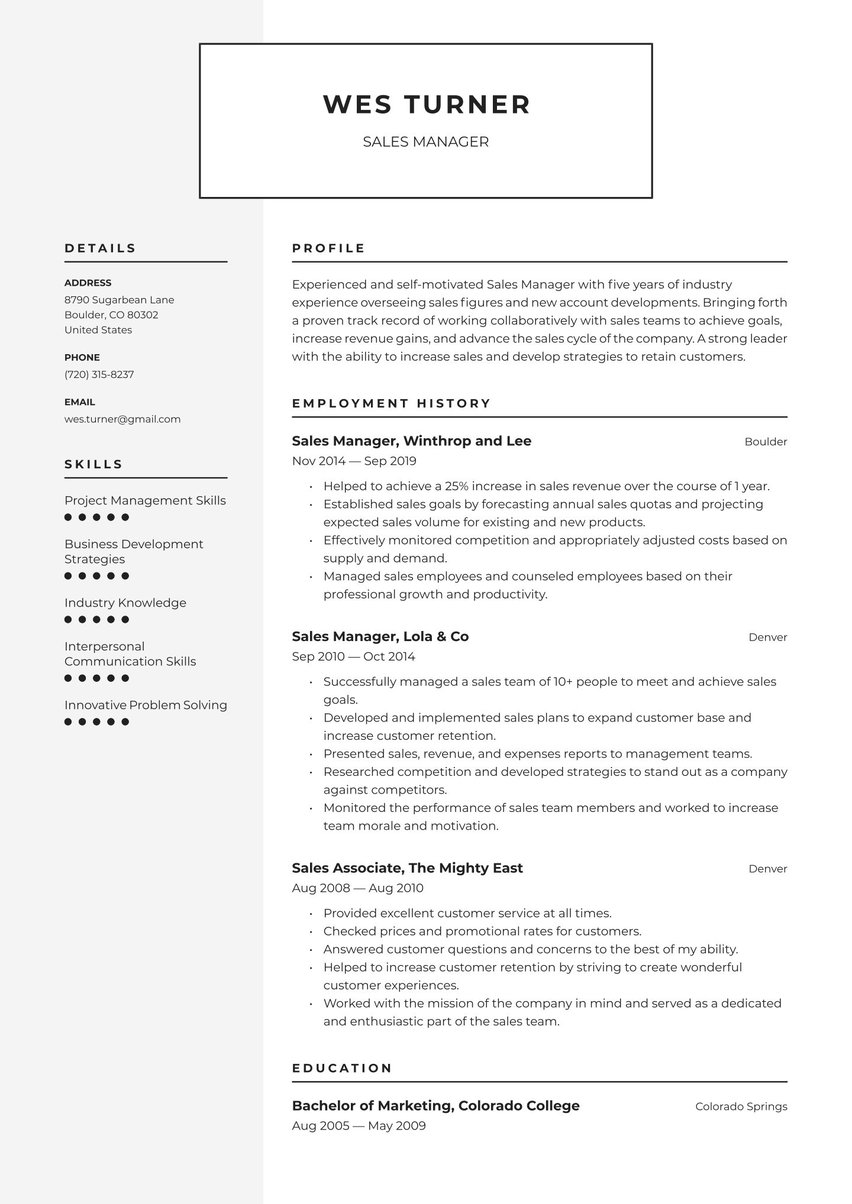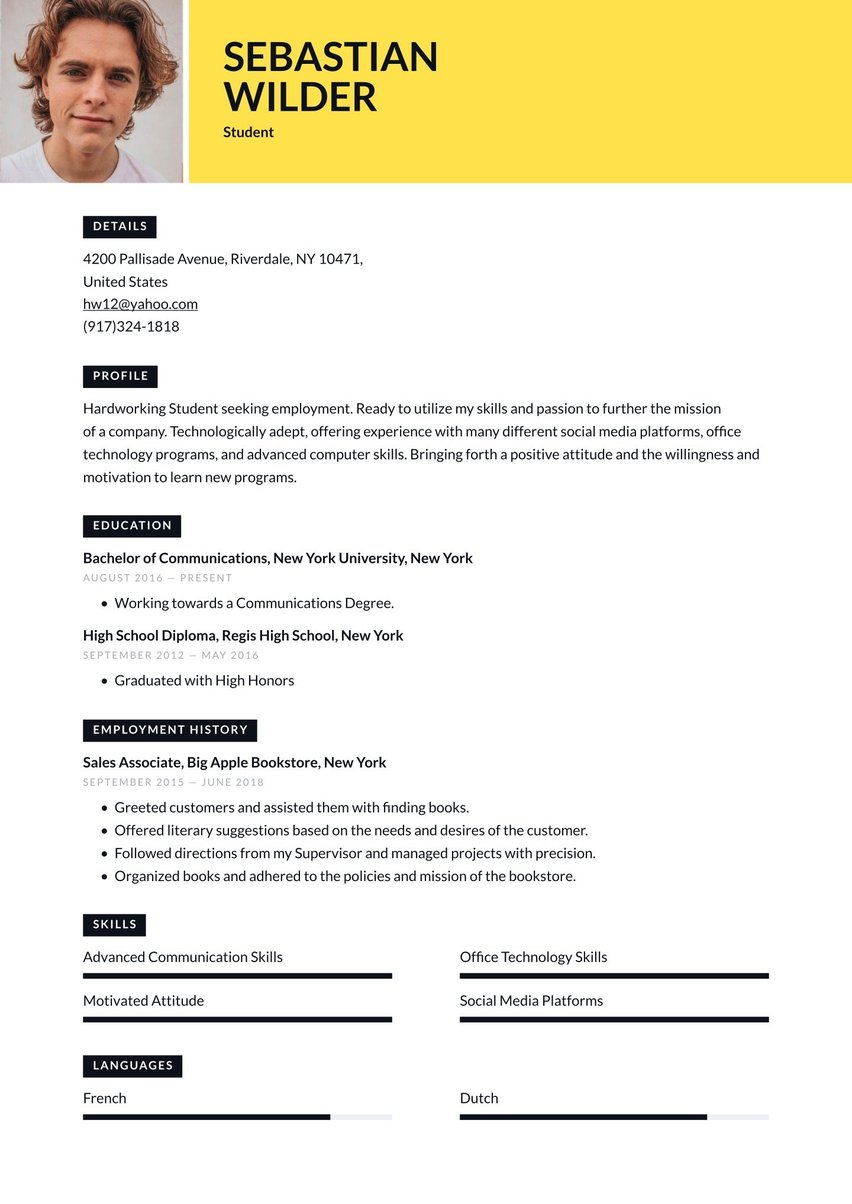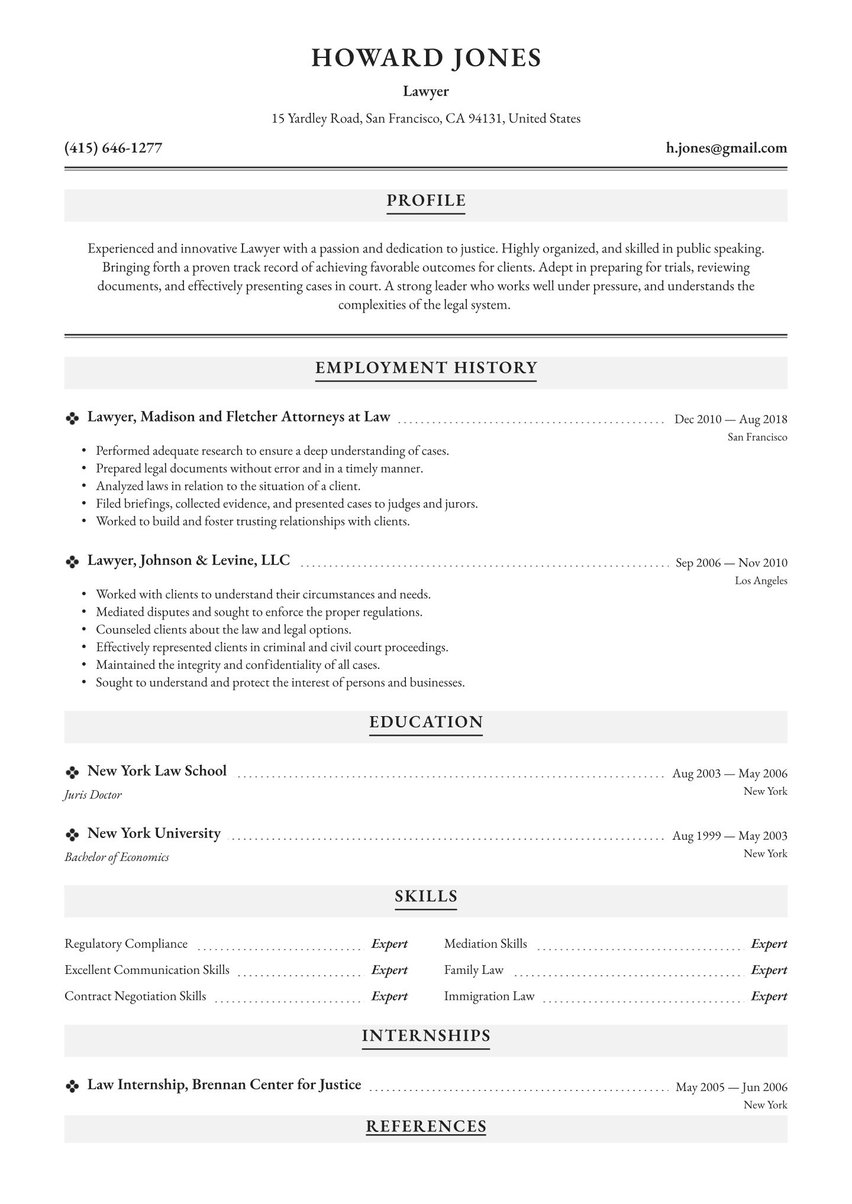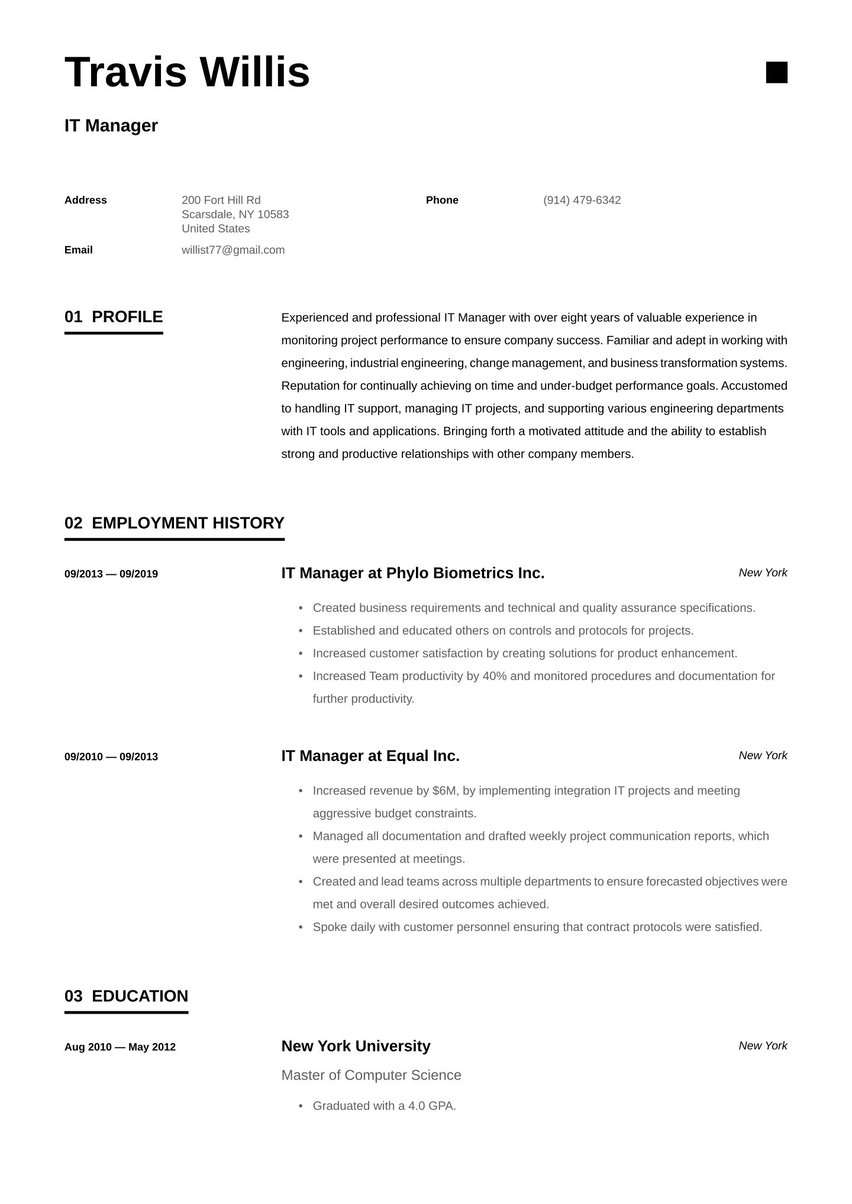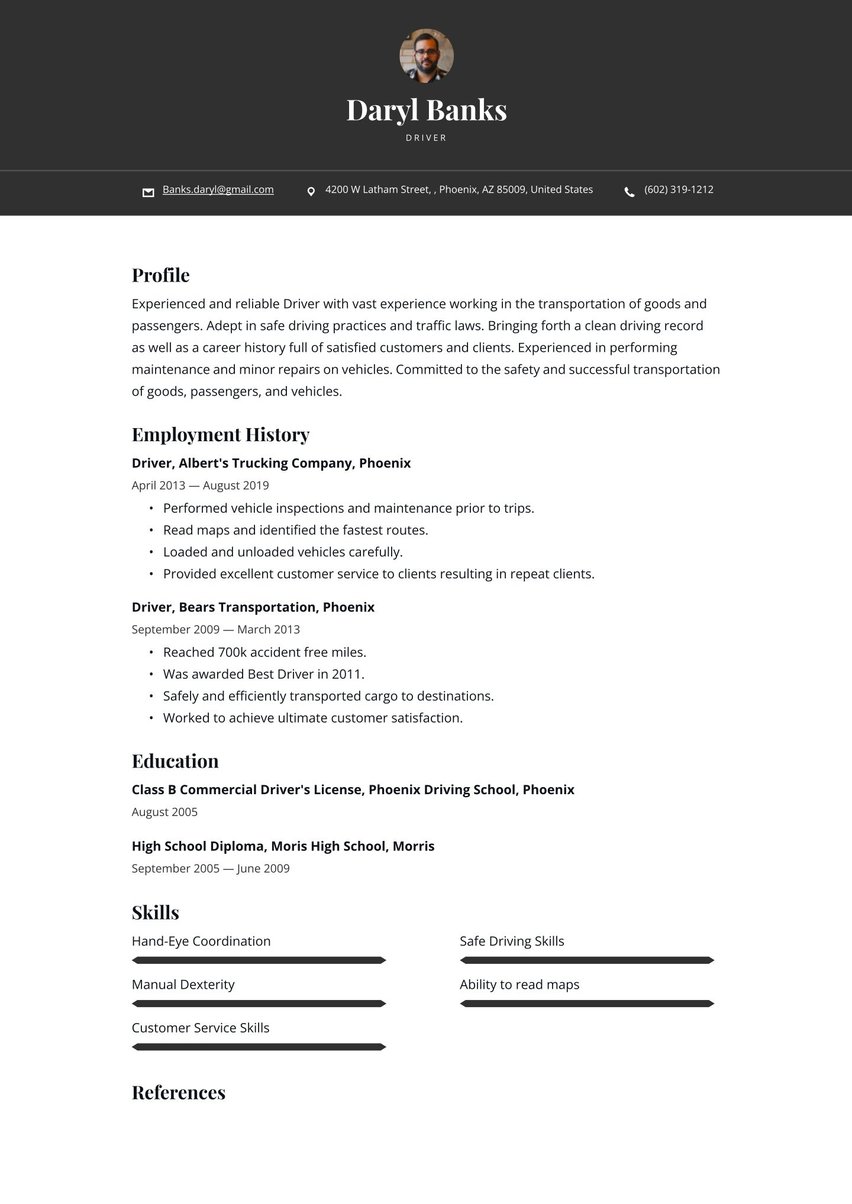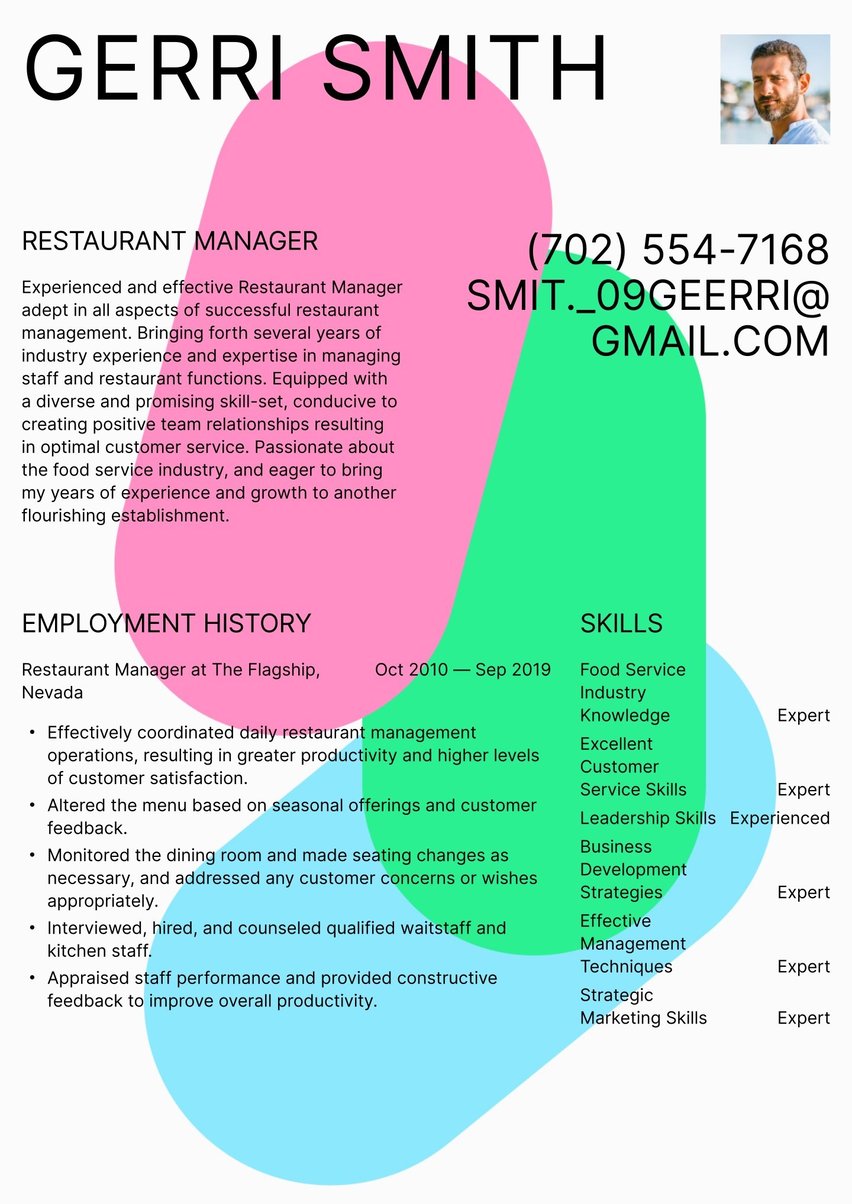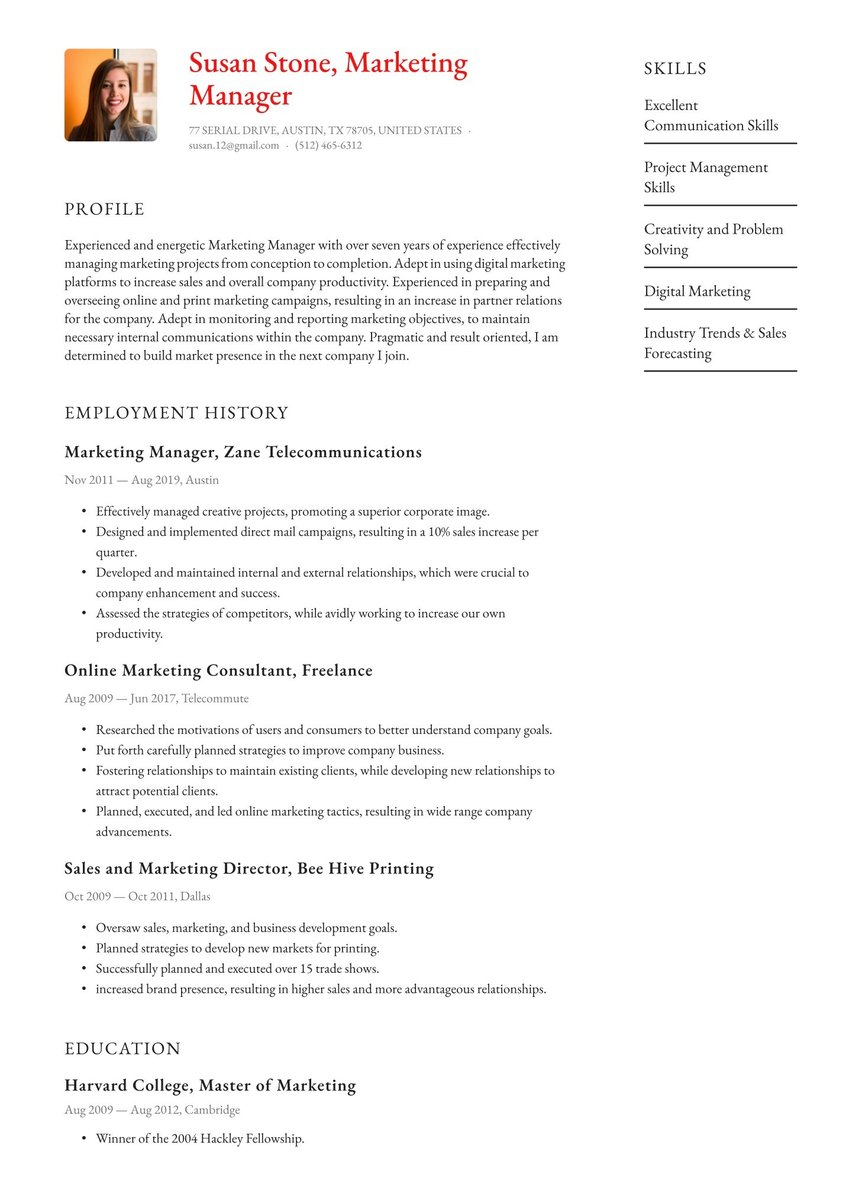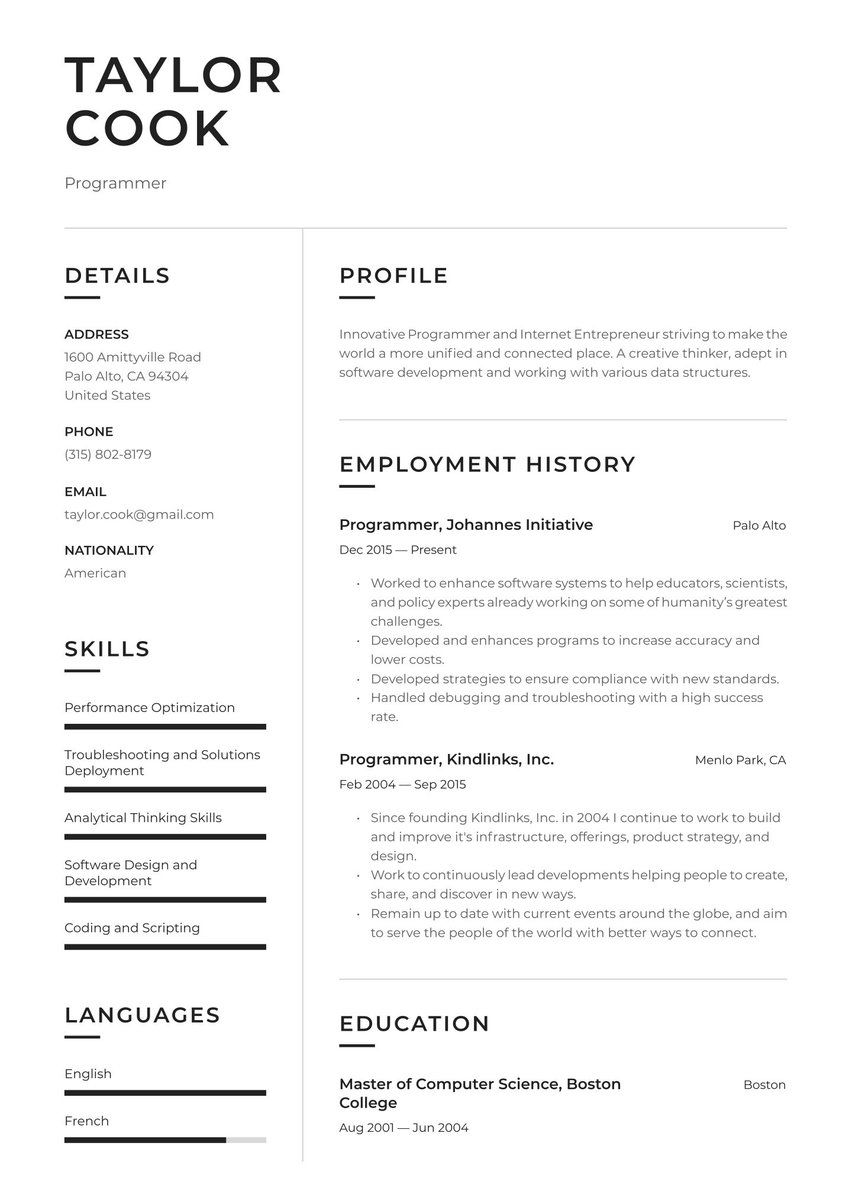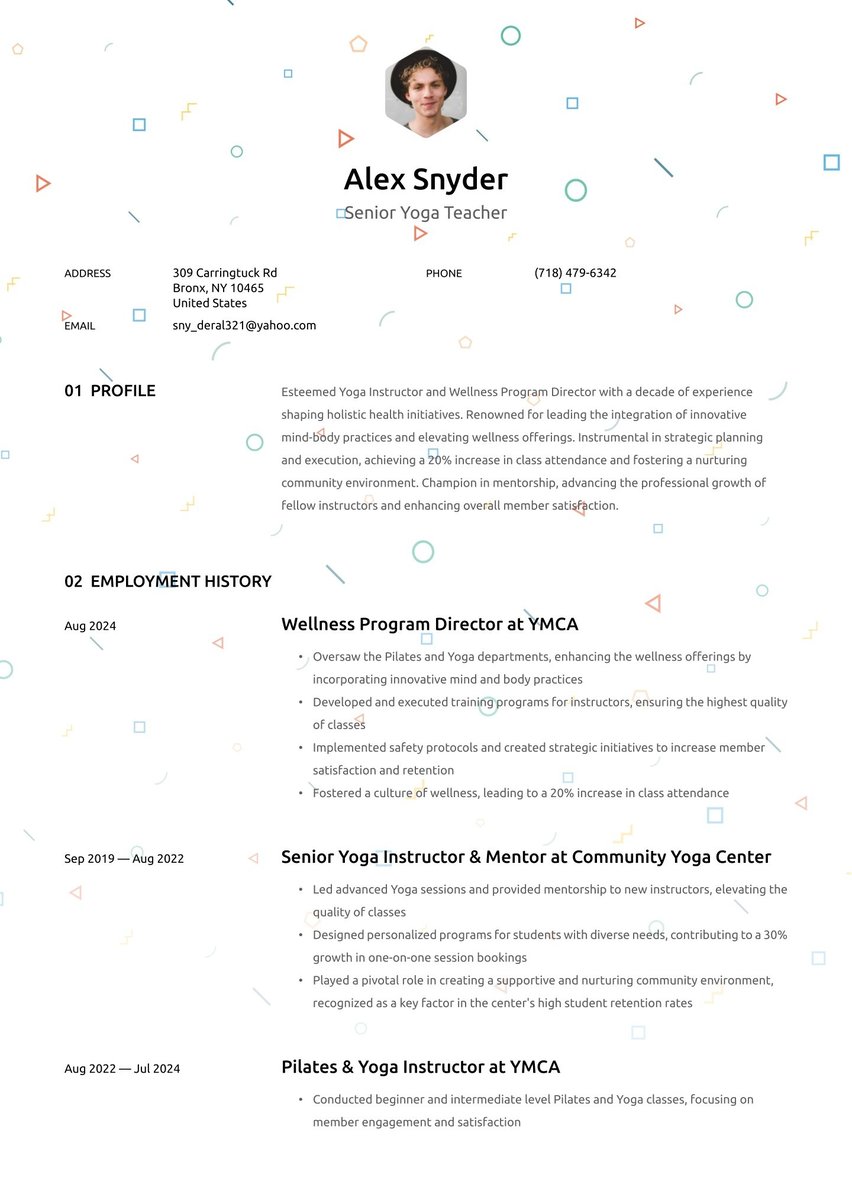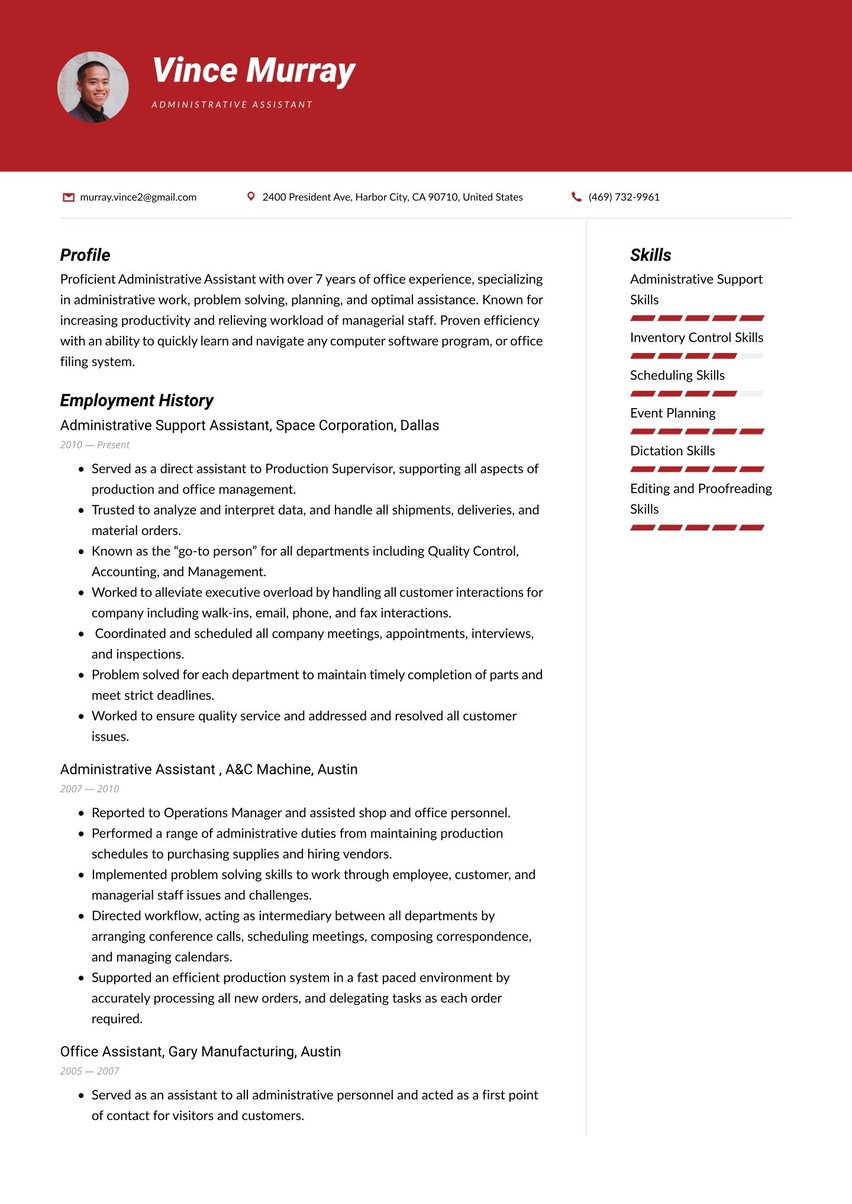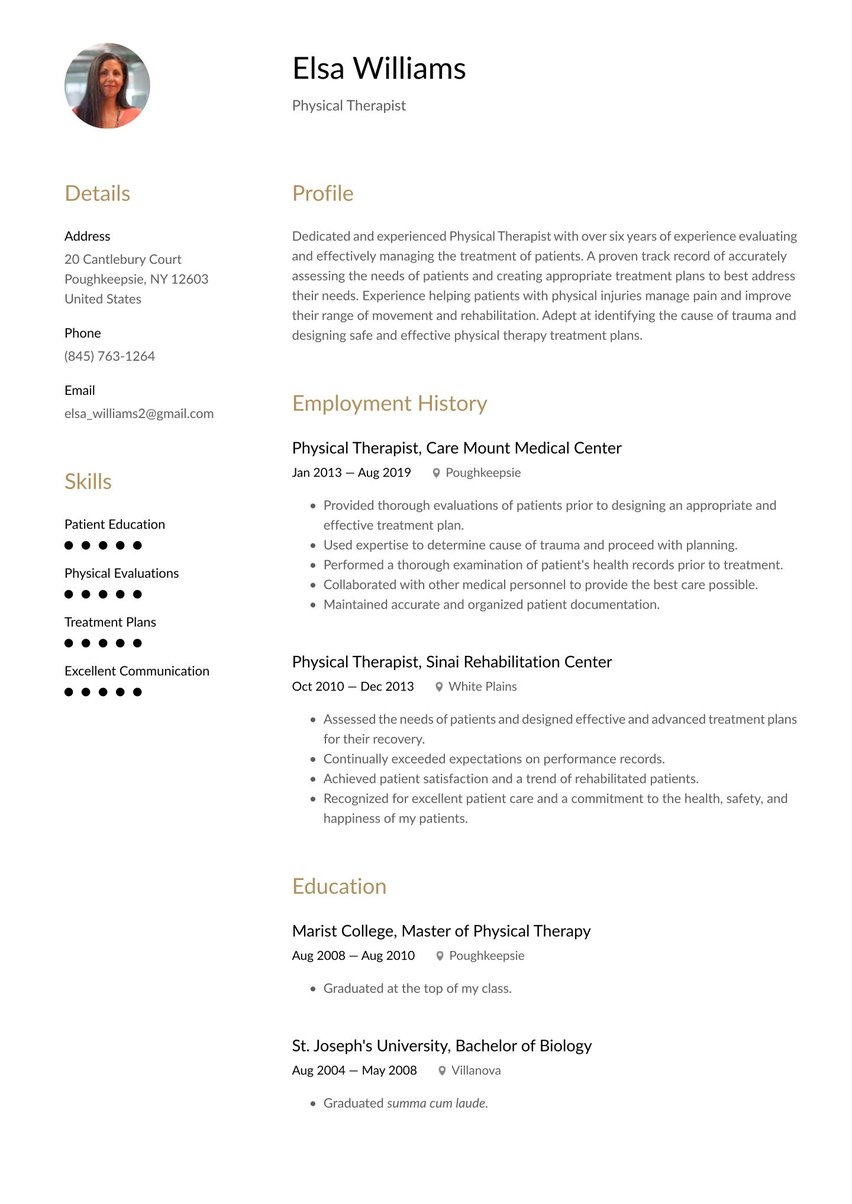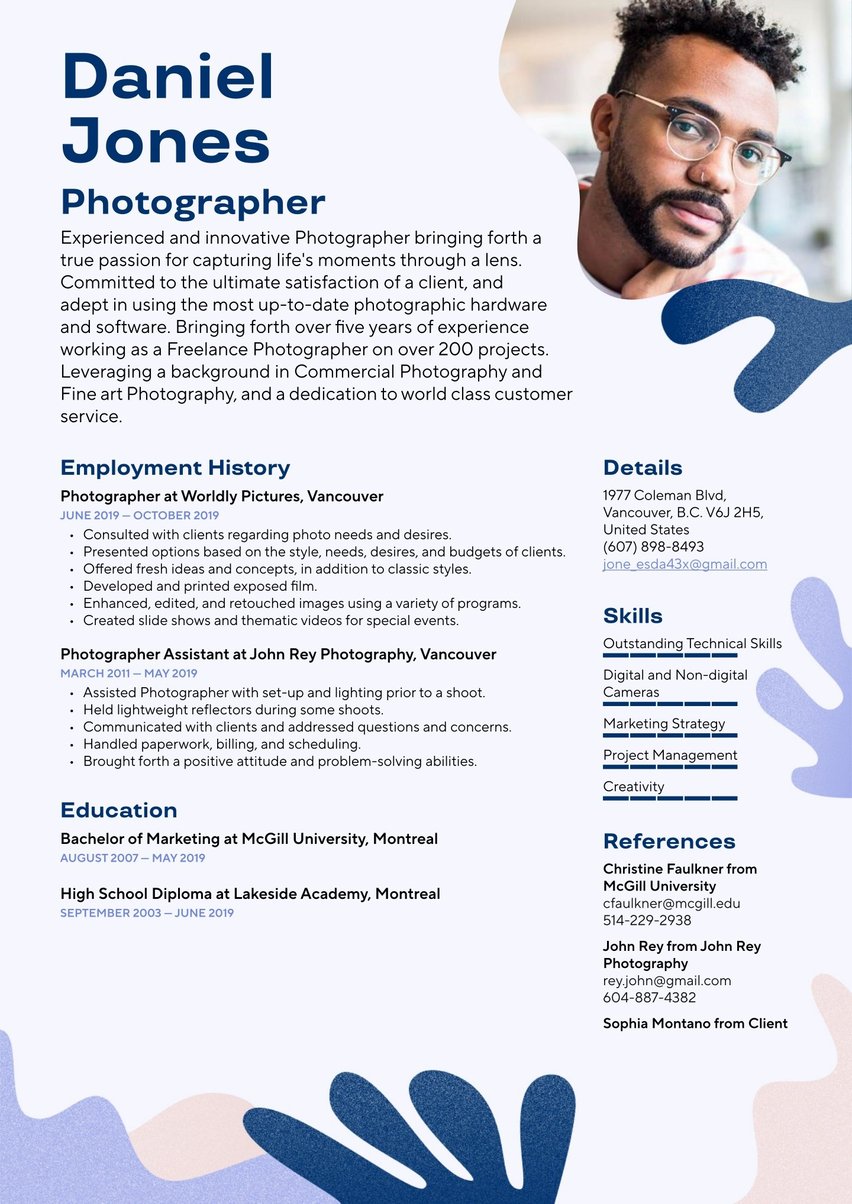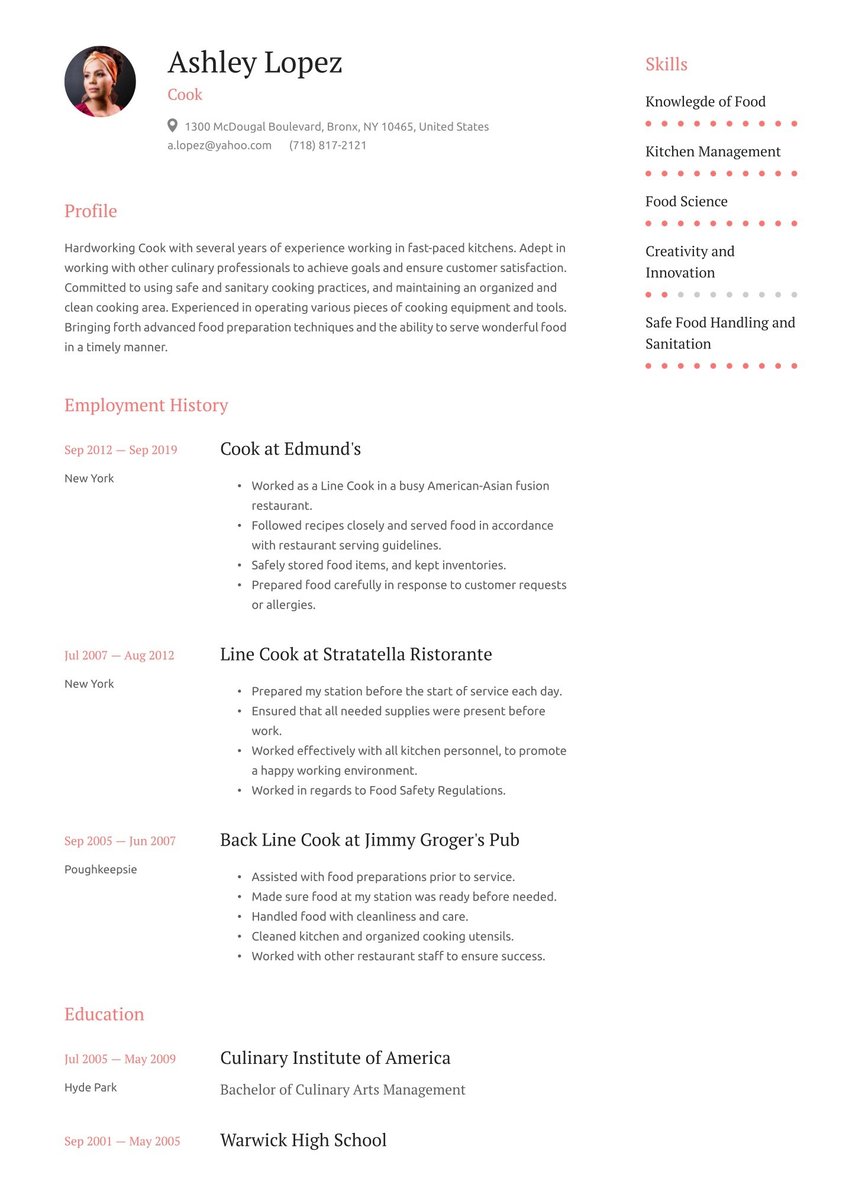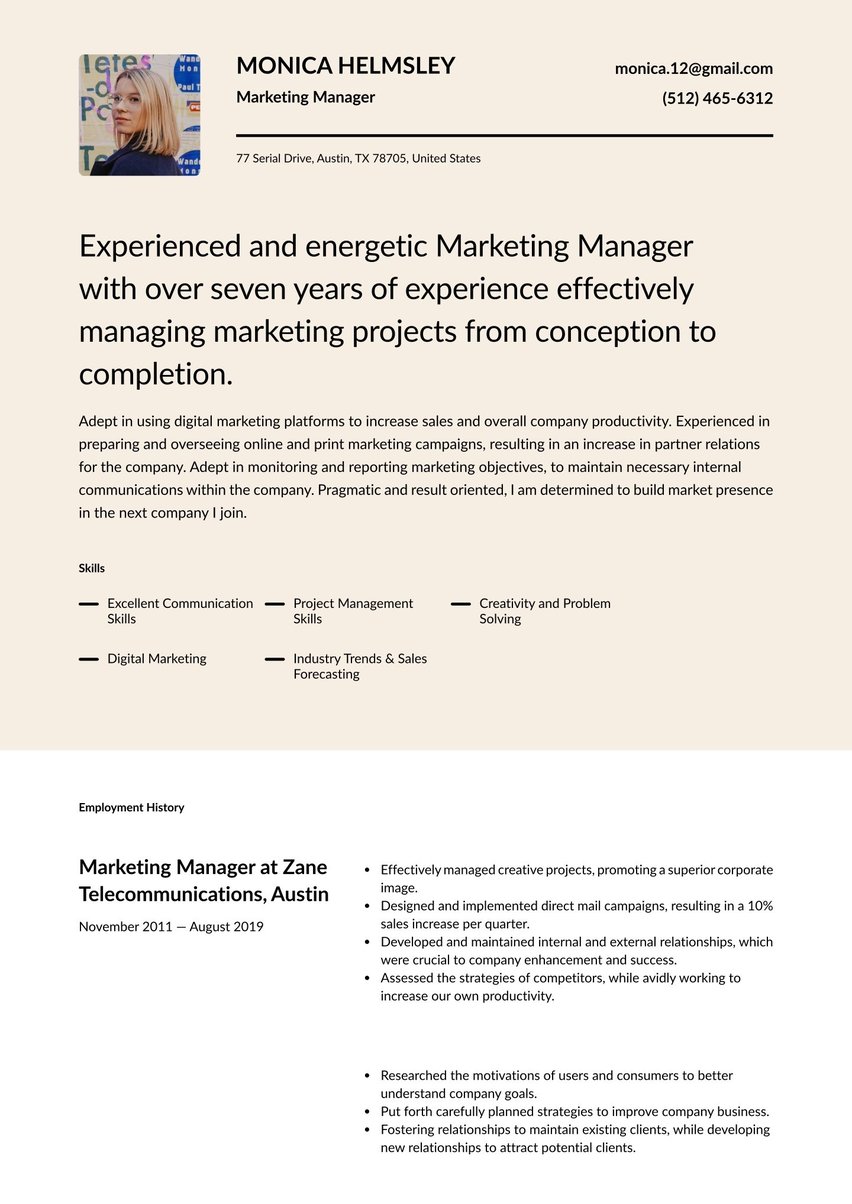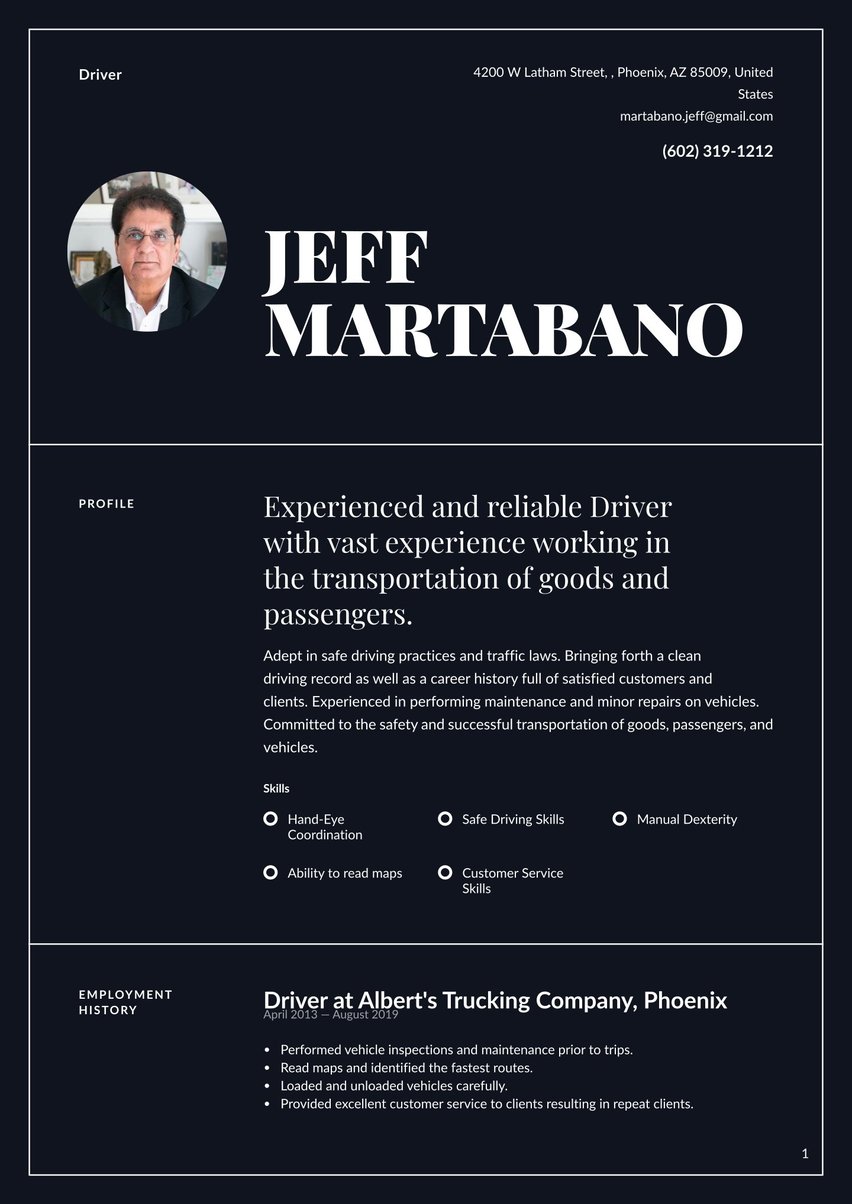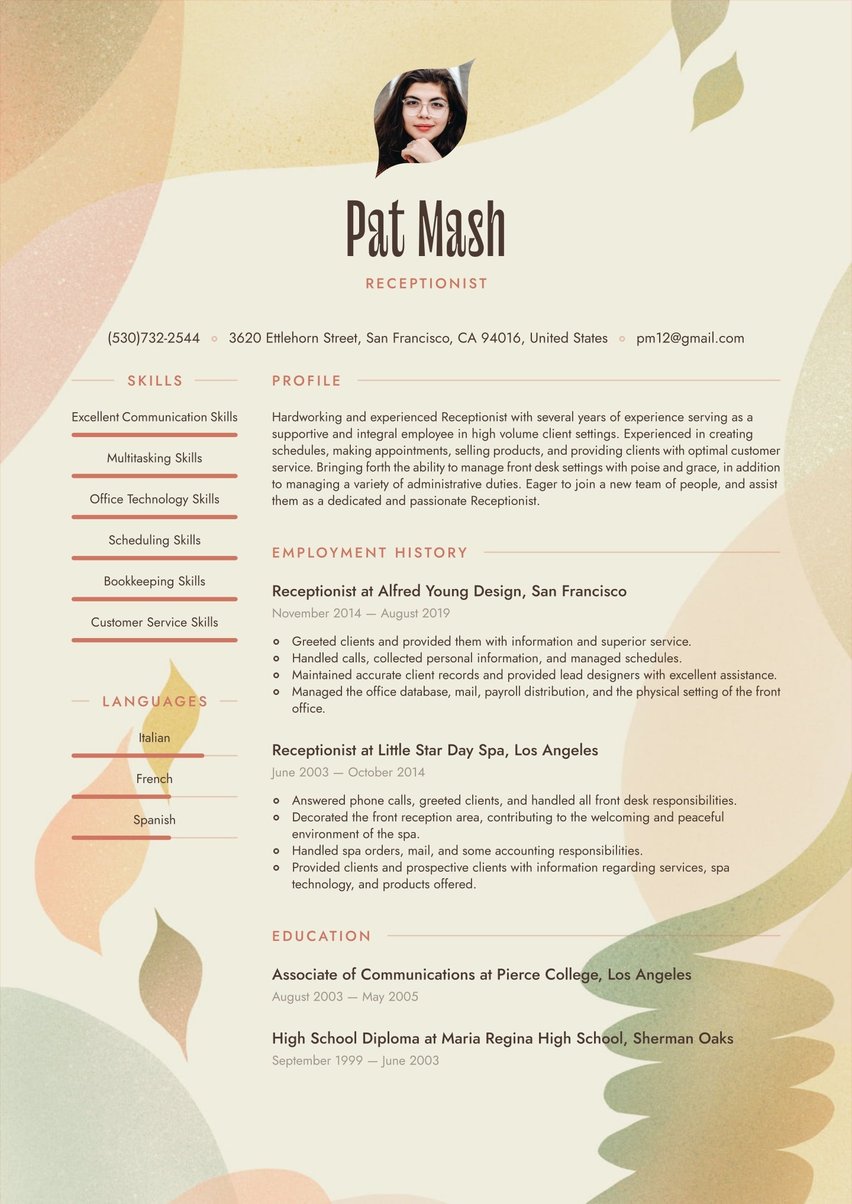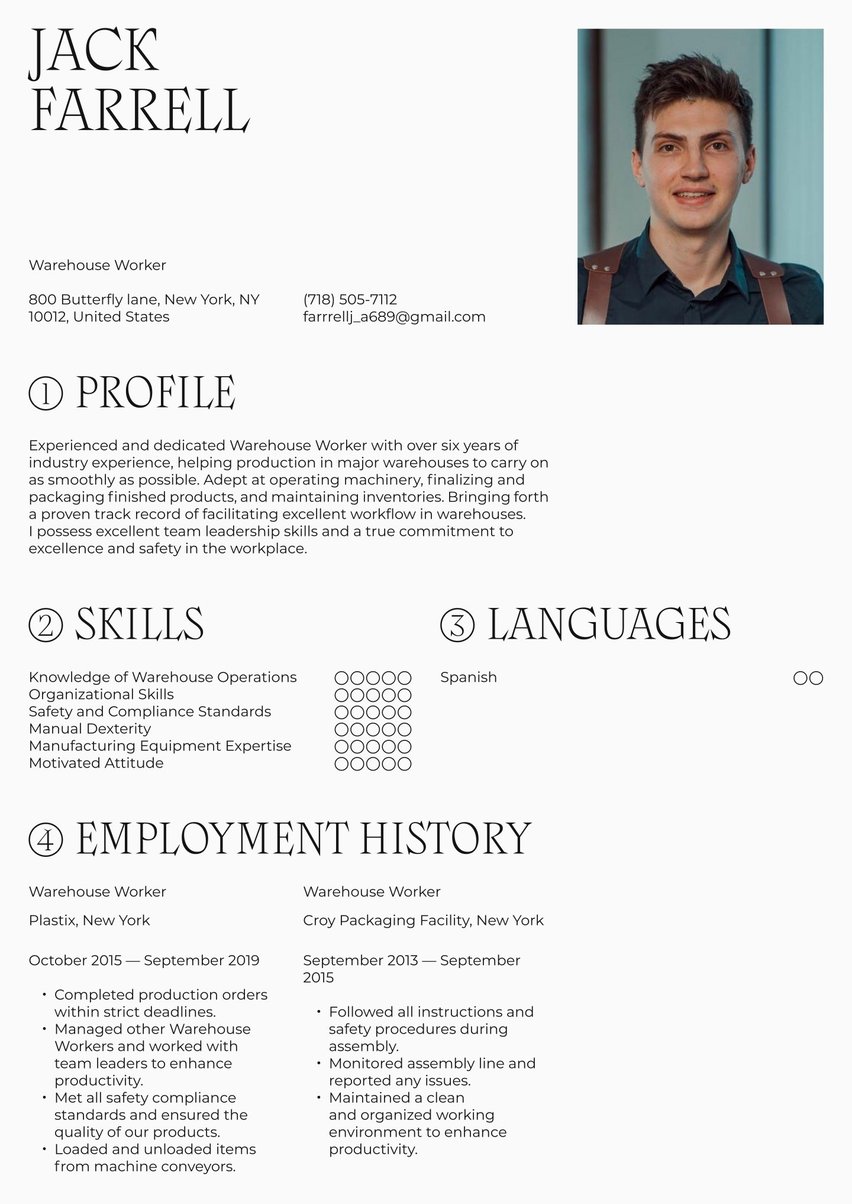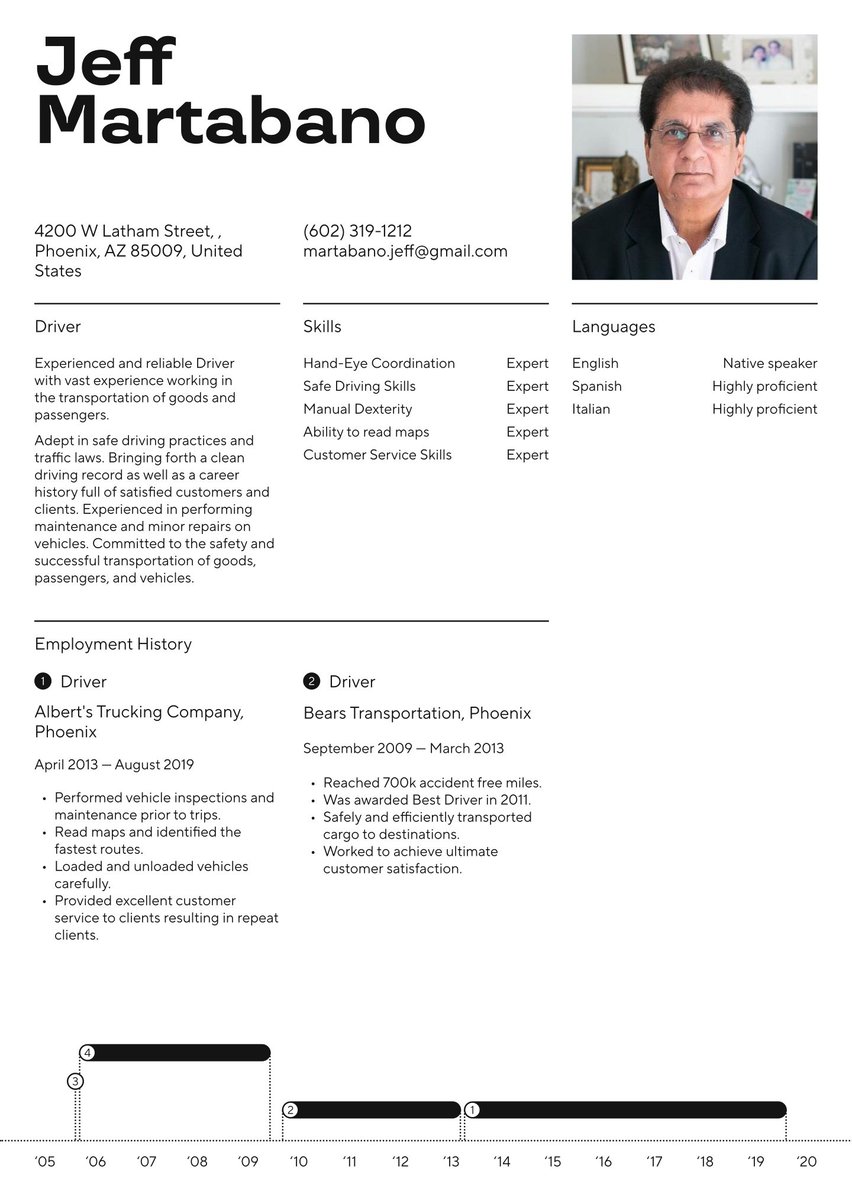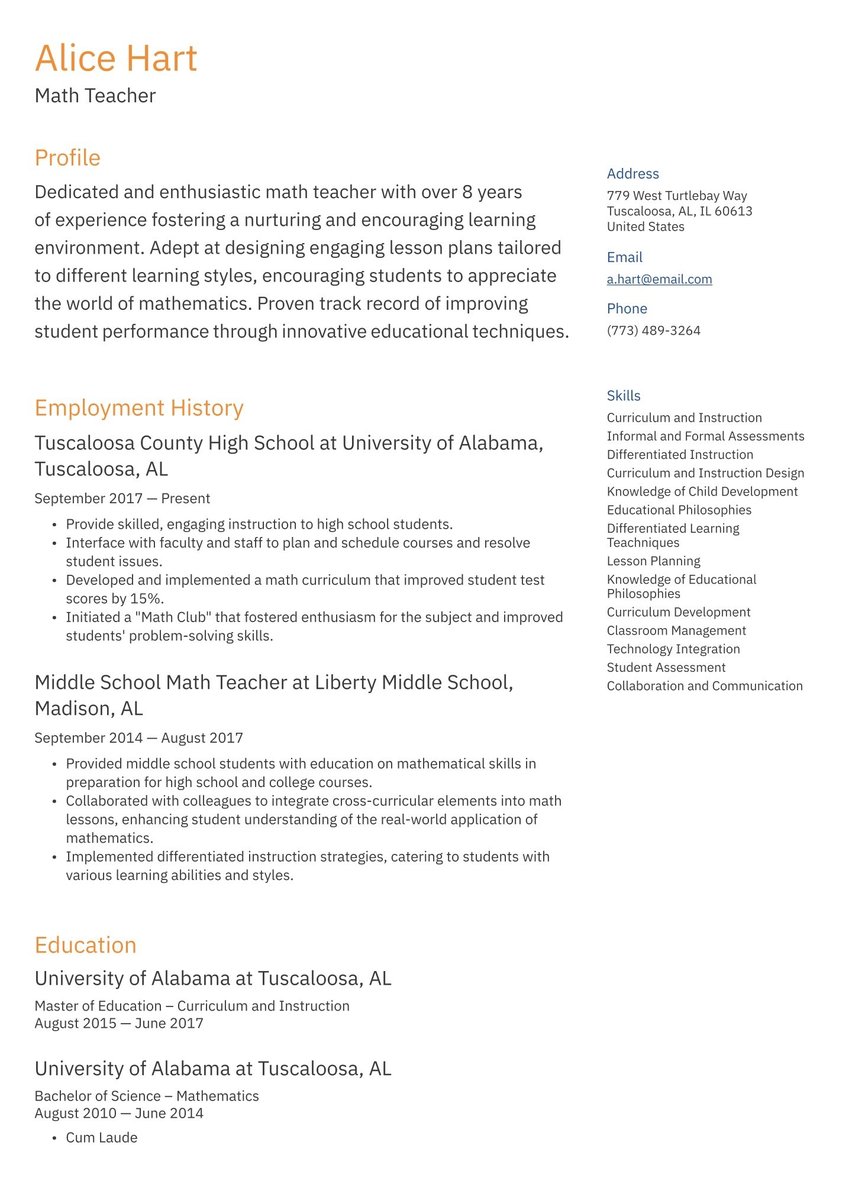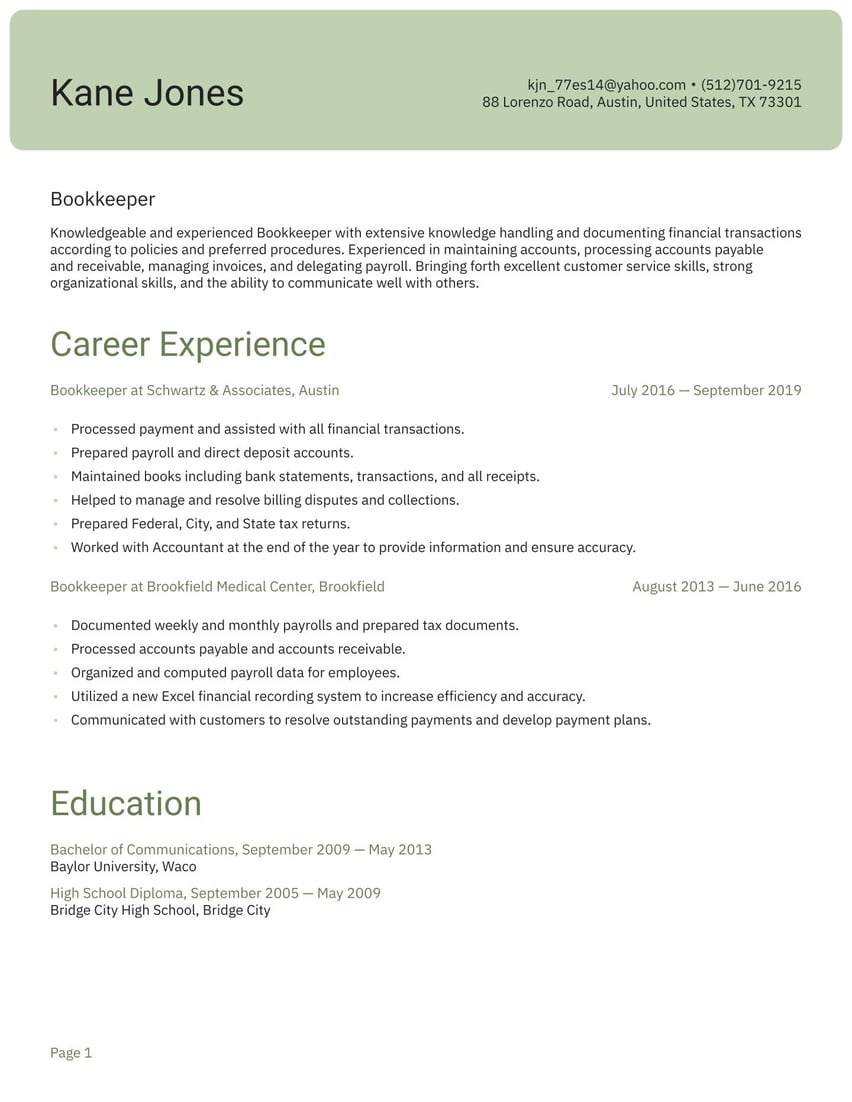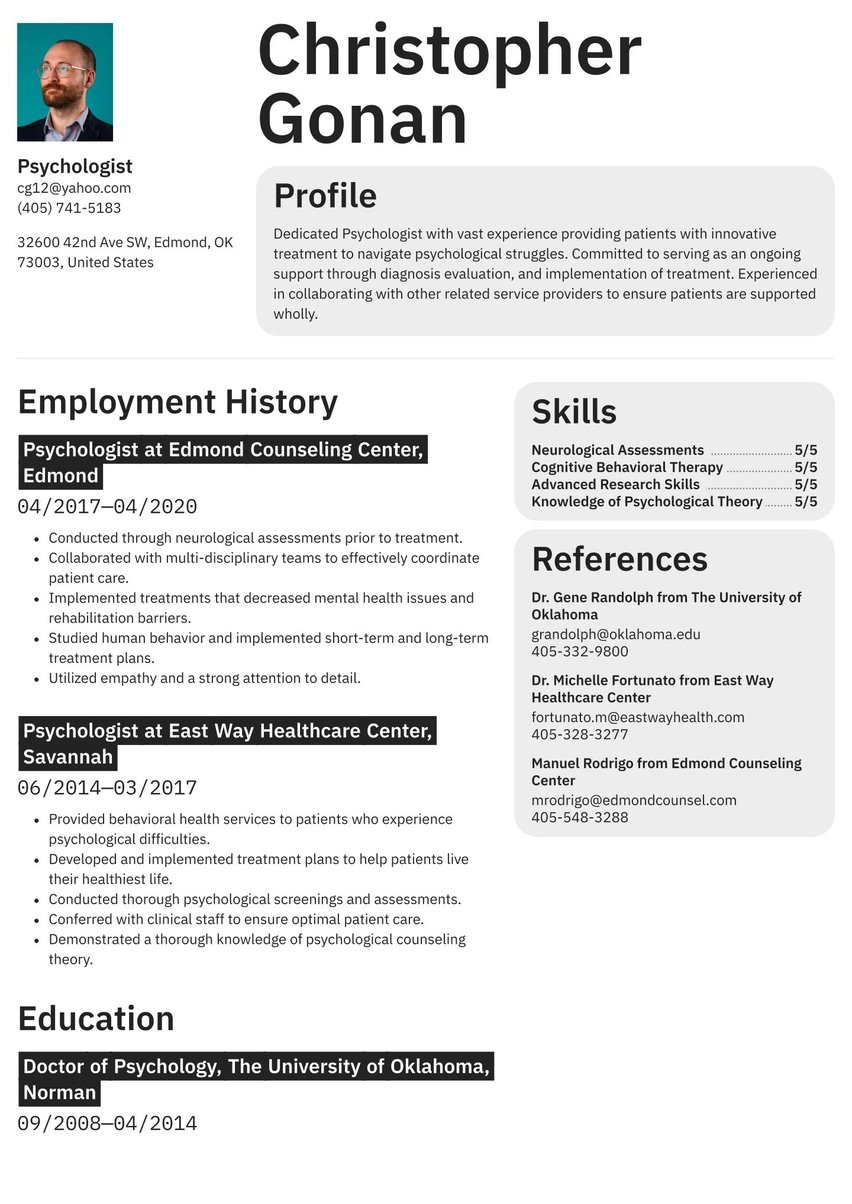Dedicated Nursing Student with the ability to multitask and work well with others. Patient-care oriented, bringing forth a compassionate and friendly attitude. Highly organized, and skilled in written and verbal communication. Committed to utilizing my skills to help others, while working towards the mission of a company. A strong leader who works well under pressure, and exudes positivity.
09/2017 - present, Intern, Greenfield Hospital, Greenfield
- Worked as a passionate and dedicated Intern in the Pediatrics Department.
- Greeted patients and recorded their medical history.
- Helped to maintain meticulous medical records, and made changes when necessary.
- Worked well with nurses, doctors, and medical professionals.
- Followed instructions and physician orders with accuracy.
09/2015 - 09/2017, Student Nurse, Greenfield Hopital, Greenfield
- Worked as a Student Nurse in the maternity care unit, assisting patients and medical professionals.
- Provided optimal care for antepartum, labor, delivery, post-partum and mother-baby care units.
- Worked with with multidisciplinary team members to provide comprehensive care.
- Documented medical histories, concerns, and changes in patient's condition.
08/2015 - present, Master of Nursing, Boston College, Boston
- 3.9 GPA
08/2010 - 05/2014, Bachelor of Biology, Villanova University, Villanova
- Patient Care
- Excellent Communication Skills
- Teambuilding Skills
- Leadership Skills
- Clinical and Academic Experience
So, you want to be a nurse. Congratulations! Right now, you’re either finishing your degree or you’ve just graduated and you’re looking for a position in the medical field that will give you hands-on experience and boost your future job prospects. An exceptional nursing student resume could land you the Grey’s Anatomy job of your dreams—but probably with more stress and less romance.
Nursing Student resume examples by experience level
Standing out as a nursing student can be difficult. When all candidates have gone through similar training, it can be hard to explain why you’re more qualified for the job. That’s where a compelling resume enters the picture.
A well-crafted resume highlights your educational achievements and clinical experiences, while showcasing your unique skills, including the soft skills—empathy, communication, teamwork—which make you an even more effective nurse.
Resume guide for a nursing student resume
As a leading provider of job search resources, Resume.io is here to help. This nursing student resume is just one of our more than 500 guides. The resume examples you’ll find in our resume builder are crafted to help you finish your application in just a few clicks.
This guide and nursing student resume example will show you how to:
- How to write a nursing student resume
- Choosing the right resume format for nursing students
- How to add your contact information
- Using summaries
- Adding your nursing student experience
- Listing education and relevant experience
- Picking the right resume design/layout
How to write a nursing student resume
Before you jump into writing your resume, take some time to learn about its key components. The following elements are crucial and should be a part of your resume:
- The resume header
- The resume summary (aka profile or personal statement)
- The employment history section
- The resume skills section
- The education section
As the world’s population ages and the healthcare industry expands to meet growing demands, (registered) nurses will become more valuable than ever. Your chosen profession can lead to a lifelong career of meaningful connections and rewarding work.
To kick your career off right, you first need to craft a great resume. To make things easier, consider using the following formula:
- Focus on your certifications. The type of certification you have will help you decide what type of job you qualify for. For example, if you’re completed your CNA training, CNA jobs are found not only in hospitals but also nursing homes and outpatient care centers.
- Tailor your nursing student resume for each position to which you apply. That means focusing your work experience list and summary differently, depending on if you're applying for medical scribe positions or EKG tech ones.
- Include relevant nursing skills that show your healthcare expertise and knowledge. Don’t forget to sprinkle these throughout your resume.
- Design your resume around the keywords mentioned in the job description so ATS screening software will flag your resume. Using ATS resume templates is a great way to do this.
Optimize for the ATS
Applicant Tracking Systems (ATS) are the harsh reality of today’s health worker hiring systems. These algorithms are often built into online job application portals and make life easier for hiring managers. They scan resumes for keywords and rank them against the others in the applicant pool. Only the best candidates are forwarded to the hiring manager's desk for review by human eyes. That’s right—after all that work, your resume may never even reach a real person.
For example, if a nursing student job posting lists the following requirements:
- “Assist in providing attentive care to pediatric patients”
- “Basic nursing tasks”
- “Medication administration”
- “Document patient information and treatment plans”
- “Assist in educating patients and their families about treatment plans”
Using this as a guide, this is what your profile summary might look like:
“Dedicated and compassionate nursing student with hands-on experience in pediatric care. Skilled in performing basic nursing tasks, medication administration, and accurate documentation of patient information and treatment plans. Adept at assisting in educating patients and their families about treatment plans.”
Selecting the best format for nursing student resumes
The most commonly used reverse chronological order resume format is preferred by recruiters. That means your work experience is listed under employer headings, in order from most recent to earliest positions.
Some nursing student job applicants might want to consider a different resume format, particularly if their relevant employment history is limited. For instance, the functional resume and hybrid resume formats allow you to emphasize special skills and education that may be valued by the employer you hope to work for. These strengths can be listed in a section labeled “Experience.”
We have many resume templates available in our resume builder, so you’ll have plenty to choose from. You can also see examples of what we have available in our resume examples section.
How to display your contact information
Gain the recruiter’s attention off the top with an eye-pleasing resume header. Displaying your name, occupation, and contact information distinctively sets your resume apart from the rest and makes it easier for duly impressed hiring managers to get in touch.
Take this a conscientious step further by making your cover letter and resume match using consistent design elements. This reflects well on your professionalism and attention to detail.
- Name and title. Your name should be the first thing a hiring manager notices, followed by the title of the job you are applying for.
- Email address. A professional email is always the best option for your resume. Choose something like [email protected] to ensure your resume looks professional.
- Phone number. Don’t forget to add a professional message to your voicemail in case a hiring manager needs to leave a message.
- Location. It’s no longer necessary to include anything more than your city and state on your resume. However, if you plan to relocate, you can note 'Willing to Relocate'.
- LinkedIn. The final element you should have on your header is a link to your LinkedIn profile. Hiring managers tend to look at your profile as part of the application process, so make sure it is up-to-date and active.
Don’t include:
- Date of birth. Remove your birthdate from your resume because including it could lead to age discrimination.
- Personal details. Your social security number, marital status, and any other personal information should not be included on your resume.
Tips for writing a career summary
In the nursing field, there will be victorious days and challenging ones. So you have to love what you do. The summary is the best place to convey this passion to your future employer.
If you truly have no experience in the medical field, then you may want to create a resume “objective” instead, which briefly describes yourself and your intentions. But if you have a bit of medical knowledge and training, then it’s best to create a summary.
This short paragraph conveys your top personality traits, a bit of your education, previous work experience, and your skills. Since your other resume sections will be more straightforward, don’t be afraid to add a touch of personality to the summary.
Whether it’s compassion, perseverance, determination, or stamina, these innate qualities are truly sought after by recruiters in the healthcare industry—so let your true colors shine.
For even more inspiration for your summary, check out our related resumes:
Below are some nursing student resume example summaries you can customize.
Aspiring registered nurse with a strong foundation in patient care and clinical skills. Experienced in patient care, medication administration, and accurate documentation. Skilled in monitoring vital signs and providing empathetic care while building positive patient relationships.
Experienced nursing student with hands-on experience in various clinical environments, including emergency, pediatric, and geriatric care. Recognized for leadership skills and ability to mentor junior students during clinical rotations. Skilled in patient assessment, wound care, and health education, with a track record of improving patient outcomes through effective communication and teamwork.
Highly skilled and experienced senior-level nursing student with a robust background in delivering exceptional patient care in diverse healthcare settings. Advanced skills in patient management, medication administration, and care coordination. Demonstrates strong mentorship skills, collaborative team dynamics, and the ability to achieve optimal patient outcomes.
Charting your nursing student experience: your real-life credentials
As a nursing student, your biggest resume challenge might just be filling out the employment history section. At this point, your experience may be limited and may include work similar to many other nursing students at your level. Therefore, the difference may come down to how you present yourself. Using precise action verbs and listing your accomplishments in each position is a good way to start.
It’s also important to give substance to your claims and not use vague descriptions, such as these:
- “Managed patient files.”
- “Worked in pediatric unit.”
- “Watched over older patients.”
- “Handed out pamphlets.”
- “Took care of patients.”
If your experience is limited, include your clinical rotations by listing the job or unit first, followed by the name and location of the hospital or medical center. List your clinical experience in the order that is most relevant to the position you’re applying to. You may choose to list skills under each clinical rotation, but you can save space and keep the resume flowing by creating a cumulative list of all the abilities you acquired during clinicals after you’ve listed the names and locations.
For other work experiences, you’ll want to give attention to the tasks you performed as well as the size and status of the institution. Facts and figures can go a long way in adding weight to your experience, e.g. the number of patients you worked with daily or the number of tests you ran.
With all this information in mind, here are some reworked examples of the vague statements mentioned above:
- Organized over 200 patient files as medical receptionist in busy private practice.
- Took vital signs and performed essential skills, like drawing blood and bandaging wounds as aide in pediatrics unit.
- Offered support to older patients as hospital sitter making more than 20 visits a week.
- Educated patients and families on best practices for home recovery upon release.
- Assisted nurses with daily rounds, administering medication, and cleaning and dressing patients.
Below is a nursing student employment history resume sample you can modify.
Intern at Greenfield Hospital, Greenfield
September 2017 - Present
- Worked as a passionate and dedicated Intern in the Pediatrics Department.
- Greeted patients and recorded their medical history.
- Helped to maintain meticulous medical records, and made changes when necessary.
- Worked well with nurses, doctors, and medical professionals.
- Followed instructions and physician orders with accuracy.
Student Nurse at Greenfield Hopital, Greenfield
September 2015 - September 2017
- Worked as a Student Nurse in the maternity care unit, assisting patients and medical professionals.
- Provided optimal care for antepartum, labor, delivery, post-partum and mother-baby care units.
- Worked with with multidisciplinary team members to provide comprehensive care.
- Documented medical histories, concerns, and changes in patient's condition.
Choosing relevant key skills that show your nursing student expertise
In some nursing circles, it's debated whether a skills section is even necessary on a nursing student resume. If you’ve been advised against it, then make sure to wrap all the most pressing skills into your experience section and summary (a good idea anyway). But if not, a skills section can be valuable when it comes to showing an employer that you’ve got exactly the right qualities for the job at hand.
And what’s more, it’s one of the ATS’ favorite sections when it comes to scanning for keywords. Your resume should contain a balance of both hard skills and soft skills. Hard skills are your clinical competencies, medical terminology, and anything else you learned in your coursework relating to treating patients and using medical equipment.
Soft skills are your innate personality traits like compassion, patience, gentleness, discipline, stamina, and motivation. Hiring managers don’t overlook these traits and you shouldn’t either.
Foreign language skills are some of the most needed abilities in the medical field. If you speak a second or third language, it’s great to highlight that prominently on your resume in the skills section. In the U.S., Spanish is the most sought-after second language, but it’s certainly not the only one in demand.
Check out a nursing student CV sample for the skills section below.
- Patient Care
- Excellent Communication Skills
- Teambuilding Skills
- Leadership Skills
- Clinical and Academic Experience
One way to handle the writing of the skills section is by creating a master list. Brainstorm your abilities, both hard and soft, picked up during all your work experiences. Cherry-pick the skills most relevant to the job at hand. When tailoring your resume to a new position, simply return to your master list and adjust your skill section as needed. For example, highlight your
- Patient interaction skills by showing your ability to communicate effectively, provide clear explanations, and offer emotional support.
- Technical skills by demonstrating your experience conducting physical exams, administering medication, and providing wound care.
- Patient advocacy skills by presenting your experience in patient education, rights, and support.
Detail your education & relevant nursing student certifications
As a nursing student, your education is is your biggest focus. Take the time to make sure the education section accurately captures everything you’ve learned, including additional certifications or memberships. While it may not be recommended for other occupations, nursing students can place their education sections toward the top of their resumes, sandwiched between the summary and experience.
List your highest degree first, including your GPA and expected graduation date, followed by any other degrees you hold, licenses, state designations, national certifications, and awards or honors, in that order. These are the guidelines set forth by the American Nurses Credentialing Center to help standardize the way nurses report their education.
In addition, consider adding:
- Clinical rotations and internships. Include details of your clinical experience, including the healthcare facility and specialty area as well as your key responsibilities and skills.
- Academic achievements. If your GPA is notably high or if you were recognized on the Dean’s List, received academic honors, or received any scholarships, grants, or academic awards.
- Continuing education. List any relevant workshops, seminars, or additional training you’ve attended.
Master of Nursing, Boston College, Boston
August 2015 - Present
- 3.9 GPA
Bachelor of Biology, Villanova University, Villanova
August 2010 - May 2014
Choosing the best resume layout and design for a nursing student resume
While your resume's summary might be the first thing the hiring manager reads, its layout and design is truly the first thing they see.
As a student nurse, you might be tempted to list all your professional experiences in great detail to have the best chance of impressing a hiring manager. However, a well-crafted and focused nursing resume will always be more effective than a lengthy, wordy one. One page is the standard resume length for most career levels, especially for students. Quality is key.
For roles in the medical field, your resume should visually convey professionalism and discipline. While a sense of style or a touch of personality might be OK, a resume template that could be described as “whimsical” or “fun” probably isn’t the way to go.
So how do you create a layout that captures this delicate balance? Resume.io’s field-tested resume templates take the guesswork out of pleasing employers and are professionally designed to give you the best chance of landing the role you want. For the medical field, we recommend a template from the professional style category—such as the Dublin, Stockholm, or Milan templates.
When it comes to submitting your resume, you’ll want to make sure that the formatting you create is the formatting the hiring manager sees. That means saving and uploading your resume as a PDF—the best resume format to be processed by human eyes and the ATS too.
Nursing student text-only resume example
Profile
Dedicated Nursing Student with the ability to multitask and work well with others. Patient-care oriented, bringing forth a compassionate and friendly attitude. Highly organized, and skilled in written and verbal communication. Committed to utilizing my skills to help others, while working towards the mission of a company. A strong leader who works well under pressure, and exudes positivity.
Employment history
Intern at Greenfield Hospital, Greenfield
September 2017 - Present
- Worked as a passionate and dedicated Intern in the Pediatrics Department.
- Greeted patients and recorded their medical history.
- Helped to maintain meticulous medical records, and made changes when necessary.
- Worked well with nurses, doctors, and medical professionals.
- Followed instructions and physician orders with accuracy.
Student Nurse at Greenfield Hopital, Greenfield
September 2015 - September 2017
- Worked as a Student Nurse in the maternity care unit, assisting patients and medical professionals.
- Provided optimal care for antepartum, labor, delivery, post-partum and mother-baby care units.
- Worked with with multidisciplinary team members to provide comprehensive care.
- Documented medical histories, concerns, and changes in patient's condition.
Skills
- Patient Care
- Excellent Communication Skills
- Teambuilding Skills
- Leadership Skills
- Clinical and Academic Experience
Education
Master of Nursing, Boston College, Boston
August 2015 - Present
- 3.9 GPA
Bachelor of Biology, Villanova University, Villanova
August 2010 - May 2014
Key takeaways for building a nursing student resume
Hiring managers are looking for a balance of hard and soft skills and they’re especially interested in passion, compassion, and the ability to work quickly and under pressure. List your education before your work experience section and make sure to include your credentials in the right order so hiring managers can get to the good stuff first.
A clean and professional resume without typos or grammatical errors is essential to beat the ATS and impress a hiring manager. Our online resume builder can help you create your resume in just a few simple clicks.


.jpg)

.jpg)
